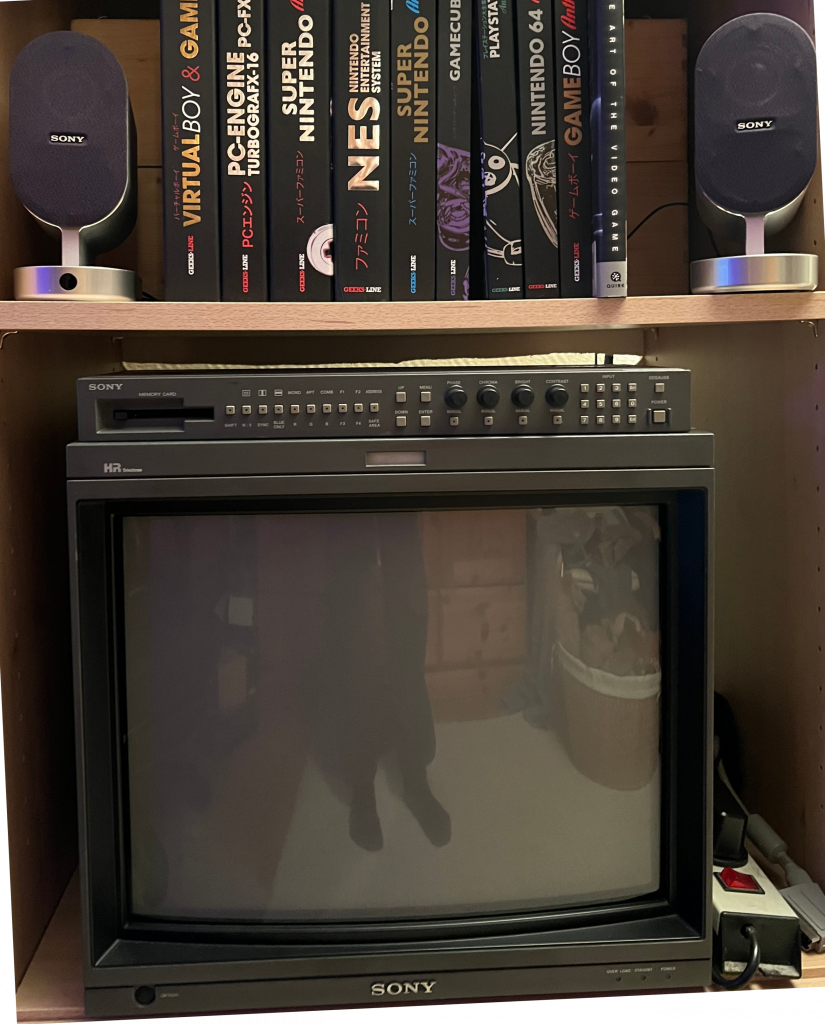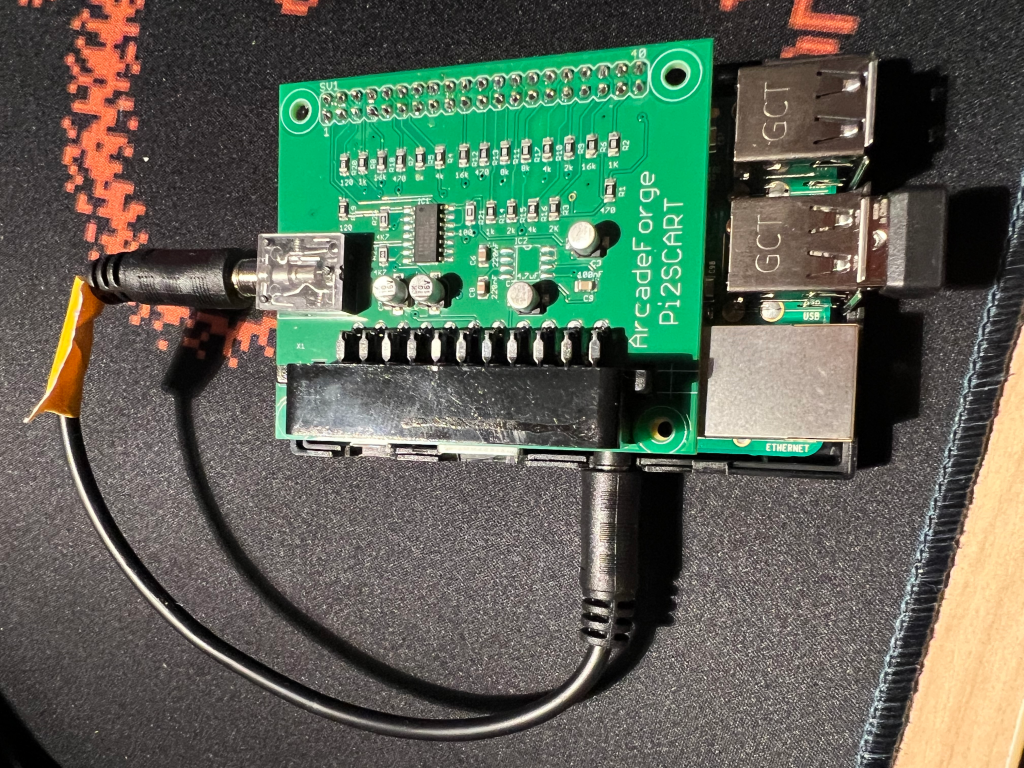The last couple of days I have bought several things to make my room more arcadey.
A couple of years ago I built myself a MAME cabinet—but that thing was a “monster” dimension-wise. I put money (a beautiful monitor) and effort (building the thing from scratch) into it… but in the end I didn’t really play it that often, and it occupied half of my room – well, nearly.
I got rid of it quite some time ago.
Still, there are a couple of “old” games that have my heart and that I like to play now and then. And even with the best scanline emulation, it can’t get near a CRT monitor feeling.
The last days I have been browsing eBay and local sites and discovered a monitor that I thought might be useful.

This is a Sony BVM-20G1E, a 20″ broadcast monitor. In order to set that thing up correctly you’ve got to have a degree in advanced CRT sciences.
I guess all you nerdy people know how to handle that beast – but I had to browse the internet for the manual. I would never have been able to get an image out of it otherwise.
Actually, the thing on top of it is the “controller” unit. It comes separately, and with that you do all the configuration. In the back there are three expansion slots – input panels, which can be bought separately. This monitor came with a BKM-21D unit, which has analog and digital inputs (all BNC). But despite its labeling, no composite input.
As I found out, the BKM-21D comes in various expansion states, and in order to have composite input it must have a certain analog daughterboard.
Yea… crazy.
What this amounts to is that, in common terms of a normal household nerd, it accepts only RGB as input 🙂
And for that, only the “old” 15 kHz variant.
After learning all that I went on a shopping spree. I wanted my old hardware to run on that thing. So I went overboard and ordered cable sets and adapters for SCART to BNC.
For my SNES and my PS1 I ordered specific RGB cables—supposedly better than the originals… handmade… and… expensive.
For my VCS 2600 I have an RGB kit (which I still have to install).
I have three different MAKs here, or Superguns, or whatever you want to call them.
A mini PC with an “arcade” graphics card (15 kHz again).
I ordered an “Open Source Scan Converter (OSSC) Pro.” This is an upscaler unit – originally designed to connect “old” consoles to new monitors, the opposite of what I target.
But that thing is supposed to be so good it can also be used as a downscaler.
Supposedly I can connect “new” consoles and convert their output to 15 kHz, reduce the resolution.
Gee – talk about crazy. I might connect a Pandora unit, which displays an emulated Pac-Man in 1920×1080 resolution, and downscale that to 256×224 (or whatever) and then output that on a CRT.
Total nonsense… but in one way also cool.
I have a Pi2Jamma unit (yes… there are such things). That means you use a Pi (usually a 3 or 4) to emulate your favorite game, add your Pi to your favorite arcade machine you have lying around – via a JAMMA connector, and play on your arcade setup!
Well, me? I just have it because I am stupid. I see it, think it is cool, and I buy it. The next years it will be lying here, because I don’t have an arcade setup.
But…
The same folks also sell a Pi2Scart (and compared to other prices – this one is cheap… sort of… 30,00€ or so).

And I tell you what – I love that thing.
I have a Pi3 anyway… downloaded the pinHP image… installed. Connected it via SCART to my new monitor… Yes, that Pi2Scart outputs 15 kHz, yes I have a SCART-to-RGB-to-BNC adapter, yes the SCART also connects the stereo output, and yes the other side of the SCART cable also has those loose RCA connectors for stereo sound. And finally – yes, when I bought the monitor a free set of active speakers (Sony SRS-ZX1) was included.
[Ah, yes… the sound… it took me two hours to figure out why it didn’t work. See, the Pi2Scart does not come with instructions… and the setup doesn’t tell you either. In order to have sound on your SCART you have to plug in that little cable you see in the image – one side into the Pi, the other side into the adapter. I read that in some Facebook message. How on earth was I supposed to figure that out without a manual?]
Anyway… it is running now, smoothly.
Who needs an arcade if one has a good monitor and a Pi?
Yes – I honestly mean that (vector games are of course an exception!).
Arcadey…
I also bought a new “controller”.

Damn. That is by far the best controller I ever had.
It feels arcadey. Really.
And if you need a weapon – and you are able to lift it – you can hit someone over the head with it, and he will not stand up.
It has a rubber plate at the bottom, it does not nudge a millimeter when you play. The hardware is SANWA bliss. You can connect it via Bluetooth, wireless dongle, or USB. It supports nearly all platforms, and I even have it set up for my little Pi.
See the first level of one of my favorite arcade games – although the video is not of the best quality, you might get a glimpse of what this is like.
And… to be at least a little Vectrexy in the end…
Did you know Gyruss uses the same sound chip(s) as the Vectrex?
LISTEN TO THAT SOUND!
Same “scene” on my PC:
Yes arcade rocks and nothing can beat a CRT for old games! Even though I don’t really understand which image formats need to be scaled down. Normally, you output in native format, and high-resolution images belong somewhere else 🙂 But anyway, have fun with it.